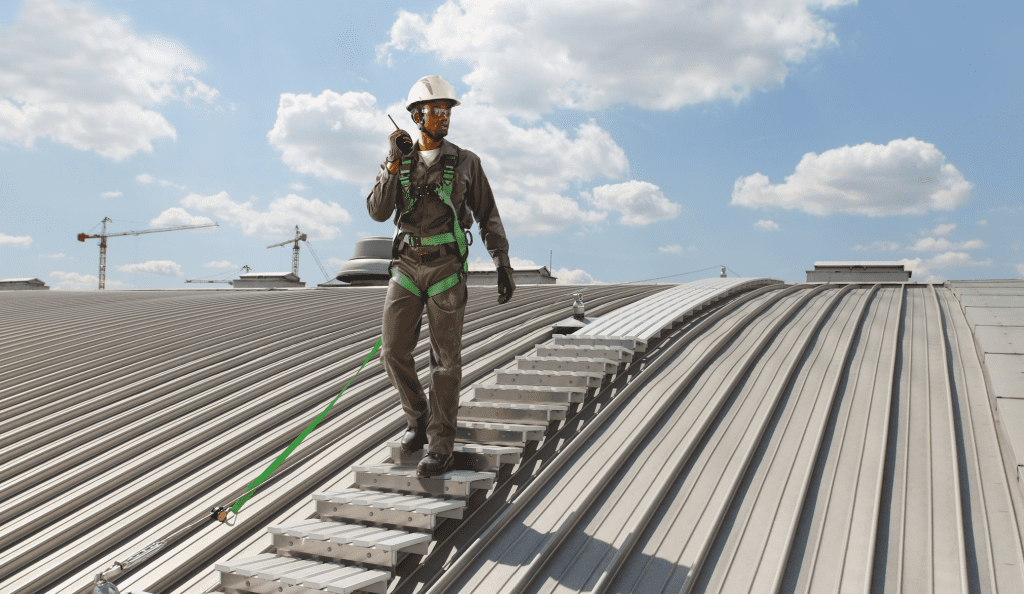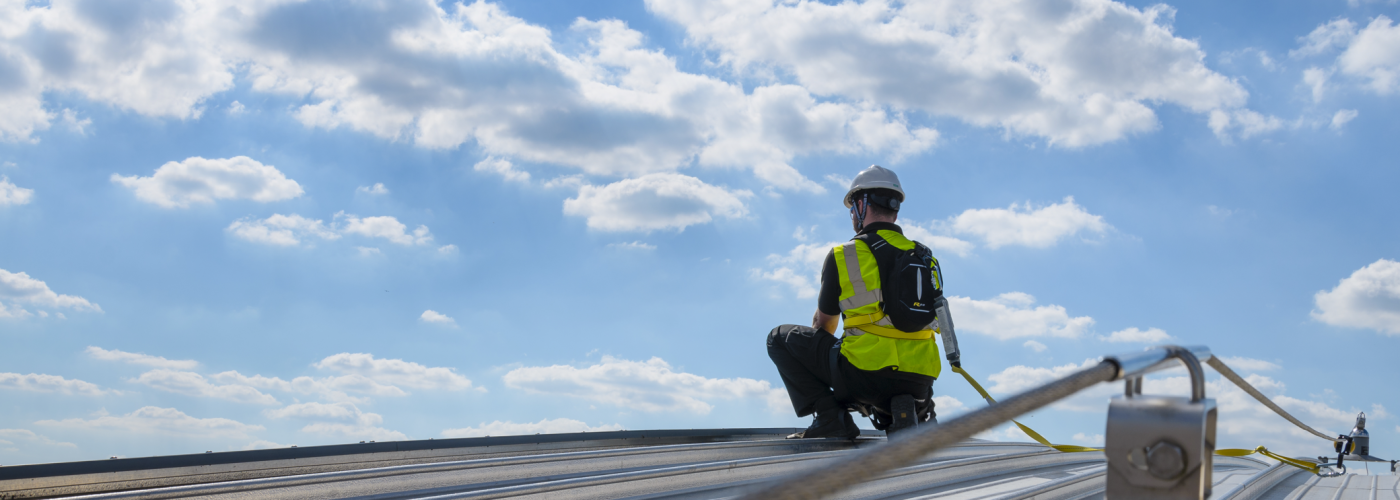Design aesthetics, multiple test standards and changing construction materials – all can pose challenges to architects when it comes to choosing the right fall protection system. Stuart Pierpoint, Specification Sales Manager, UK and Netherlands at MSA Safety, looks at the heritage of fall protection systems and what architects may benefit from considering when selecting fall protection

What are some of the challenges facing architects today when it comes to specifying fall protection?
Buildings are constantly evolving in complexity and, as a result, a roof has a lot more happening on it today. Architects need to consider the multiple products present on a modern roof, when designing a roof’s capacity, such as: solar panels, CCTV, air conditioning units, lightning protection, green roofing systems, roof lights, general roof maintenance, and more. With this comes the planning of safe access for their installation, as well as planning future access to service these products, and maintain other high-risk areas, for the lifespan of a building.
The challenge for architects is to incorporate a fall protection system that enables safe access, whilst also addressing their other priorities, such as the freedom to design aesthetically pleasing buildings. Architects need systems that complement their designs.
Then, of course, there is the challenge of how to position a fall protection system. This is where MSA Safety’s free design service can really help. If architects provide architectural roof drawings, we can recommend system designs to help them maintain their architectural integrity, whilst not compromising user safety.
When, and why, should fall protection be a key consideration in the design phase?
Working at height is still the biggest cause of workplace deaths, with an average of more than two workers a month[1] in the UK losing their life from falls in 2021/2022. Fundamentally, fall protection systems are designed as one layer of protection to prevent loss of life and keep workers safe. This is a massive responsibility for architects when selecting fall protection systems. This decision can benefit from consideration at the start of the design process, alongside the access and maintenance strategy. Additionally, putting the user at the forefront of future maintenance will support long-term safeguarding of both workers and the building.
What are some of the most important things to consider when choosing a fall protection system?
As previously discussed, building complexities are continuing to evolve and fall protection systems need to keep pace. Architects often like to be ahead of the curve, so when it comes to worker safety, they want to know they’re choosing a solution that’s both innovative and proven.
Some key considerations for fall protection systems for architects include ease of installation, compliance, worker safeguarding, building/roof protection and meeting standards. Whilst this may seem like a lot to consider, a well-designed fall protection system will do what the architect deems as important for the application, whilst still helping to protect the integrity of the roof.
It is important to note that if a system isn’t practical or easy to use, workers may not use it properly and could put themselves and others at risk. Architects should also consider the walkways and other exterior paths that workers use to access a fall protection system, remembering that it’s not always dry and sunny and that workers may need access when it’s raining, windy or in sub-zero temperatures – all conditions that increase the risk of workers slipping.
What are the current regulations and legislations that UK architects need to be aware of?
The key UK regulations that architects need to understand and comply with, both at the design stage and throughout the specification stage, are the Work at Height Regulations. These were updated in 2007 and apply to all work at height where there’s a risk that a worker can fall and sustain an injury. They combine Construction Regulations, The Workplace (Health and Safety Welfare) Regulations and CDM (Construction Design Management) Regulations.
What test standards apply to fall protection systems in the UK?
Test standards are regularly updated, in line with changes in construction which are driving the development of fall protection systems. Currently, the European standards for anchor devices (these also apply in the UK) are EN 795:2012 for single users and CEN/TS 16415:2013 for multiple users.
However, the latter does not cover permanent anchor devices and only requires testing on a rigid structure, not the actual roof structure itself. In light of this, the UK introduced BS 8610:2017, an additional standard that covers testing of anchor devices on the actual base structure. Particularly in the case of roofs that are made of a thin material, such as copper, zinc, or aluminium.
In addition, since 2013, permanent anchor devices for roofs need to comply with EU Construction Product Regulation 305/2011.
How have fall protection systems changed in recent years?
Fall protection systems continue to evolve with developments in roofing technology. At MSA, innovation and the premium nature of our products over time have resulted in systems becoming simpler to use and easier to install – a key benefit for installers and contractors alike.
With the use of materials like copper and zinc, some roof profiles have also become thinner and potentially more fragile. This is driving developments in load absorption technology. For example, at MSA Safety, we’ve utilised our Constant Force® technology so that our systems can typically be installed on these roof profiles and still control the load in the event of a fall. We’ve also increased our emphasis on comfort and enhancing the user experience , and help encourage proper use of fall protection systems or personal protective equipment (PPE).
Can you tell us a bit about MSA Safety’s heritage in fall protection systems?
MSA Safety has been protecting lives for more than a century and has experience in cable-based fall protection systems since 1974. This means we have a thorough understanding of safety challenges and the needs of working at height.
In 2001, we introduced an innovative and ground-breaking fall protection system called the Constant Force® Post. This has an energy absorbing coil inside that limits the load to the roof, helping to protect both the worker and the roof from the sudden energy of a fall. It has been tested on more than 500 different representative roof constructions and is used around the world on thousands of roofs.
What makes MSA Safety systems unique?
There is no one size fits all when it comes to our fall protection systems. With the use of high quality materials, proven performance of energy absorption systems and specialised design service, we are proud to offer our customers a holistic safety system that considers the architect, the user and the building.
Finally, if you had one message for architects around the specification of fall protection systems, what would it be?
MSA are here to be your trusted source and help you select practical solutions, even within challenging applications. You don’t need to choose between innovation and safety – MSA’s Latchways Constant Force® Post means you can have both.
We have a team of experts available to assist you in understanding and choosing the right fall protection solutions from our range. MSA Safety knows that considering fall protection can sometimes feel like a struggle and we are here to assist you.

[1] https://www.hse.gov.uk/statistics/fatals.htm
Building, Design & Construction Magazine | The Choice of Industry Professionals





